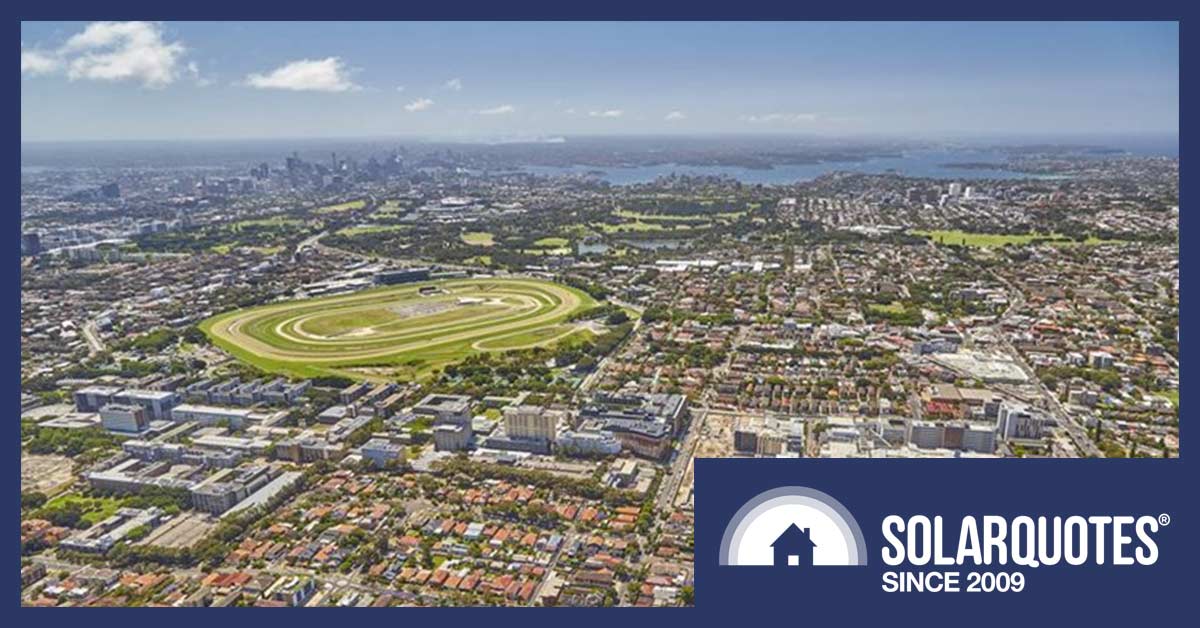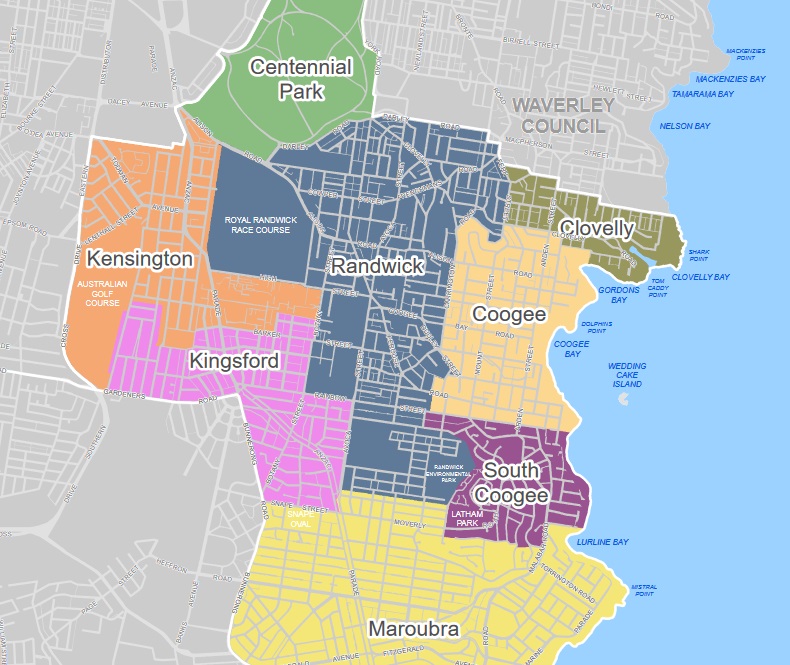
Randwick City Council Has Buckets Of Solar, Battery & Sustainability Rebates
There are a lot of local councils in Australia, but there’s none better than Sydney’s Randwick Council. Their incentives are so generous a household could receive rebates of up to…
- $500 for a solar system
- $1,000 for a home battery
- $500 for an electric vehicle (EV) charger
…in a single financial year. Then the next financial year, the household could receive up to another $2,000 in sustainability rebates because they have plenty more.
Here are all the sustainability rebates available to households, strata properties, and businesses and their eligibility requirements.
Rebates For Households
Incentives available for freestanding houses:
- Rooftop Solar: 25% up to $500
- Home Battery: 10% up to $1,000
- Heat Pump or Solar Hot Water System: 25% up to $500
- EV Charger: 25% up to $500
- Solar Inspection: 50% up to $100
- Insulation: 25% up to $500
- Pool Pump: 50% up to $250
- Rainwater Tank: 25% up to $500
- Lighting: 25% up to $500
- Sustainability Assessment: 50% up to $150
- WaterFix Water Saving Measures: 50% up to $100
Because up to $2,000 in sustainability rebates can be received each financial year, it would be technically possible to collect up to $5,100 in sustainability incentives in a little over one year if you timed it right. Provided, of course, they don’t get sick of you trying to catch them all like an environmentally themed Pokémon player.
These rebates are also available for units and businesses, but can be even greater than the amounts shown. For the common areas of Strata title properties, they can be much higher.
Some Rebates Higher For Units
In some cases, it’s possible to get even more free money for a unit than a freestanding house. If you’re wondering if your home counts as a unit, here’s Randwick City Council’s definition:

While they can get all the rebates a freestanding house can, the ones that are higher for units are:
- Rooftop Solar: 25% up to $1,000
- EV Charger: 25% up to $1,000
- Rainwater Tank: 25% up to $1,000
Getting these upgrades for a unit can be more difficult and expensive. The higher incentives appear to be an attempt to provide fairness in outcomes.
Rebates apply whether the unit is owner-occupied or owned by a landlord. But if you’re a tenant, you’ll need your landlord’s approval.
Strata Common Area Rebates
Here’s what Strata body corporates can receive for sustainability upgrades:
- Rooftop Solar: $1,000 per lot area up to $5,000
- Heat Pump or Solar Hot Water System: 25% up to $2,000
- EV Charger: 25% up to $5,000
- Insulation: 25% up to $2,000
- Rainwater Tank: 25% up to $2,000
- Lighting: 25% up to $2,000
- Sustainability Assessment: 50% up to $500
- WaterFix Water Saving Measures: WaterFix® Strata: 50% up to $2,000
For the rooftop solar rebate, my understanding is if the solar system provides power to five or more units, the maximum of $5,000 can be received. While a percentage isn’t specifically given for this incentive, no sustainability rebate can be more than 50% of the purchase price. This rebate can be applied to installations that use Allume Energy’s SolShare to provide solar power to units.
Business Rebates
Businesses can generally get all the subsidies households can, but here’s a list of rebates for businesses that are higher than for freestanding houses:
- Rooftop Solar: 25% up to $1,000
- Heat Pump or Solar Hot Water System: 25% up to $1,000
- EV Charger: 25% up to $1,000
- Insulation: 25% up to $1,000
- Rainwater Tank: 25% up to $1,000
- Lighting: 25% up to $1,000
- Sustainability Assessment: 50% up to $500
Cheaper NABERS Ratings
In addition to the above, apartment buildings and some businesses can get a rebate for getting a NABERS rating. This stands for National Australian Built Environment Rating System and scores a building on how energy efficient and environmentally friendly it is. If you get a high rating, you can boast to your tenants and neighbours about your NABERS. The amount of the rebate depends on if it’s the first or second time the building is rated:
- First rating: 50% up to $2,000
- Second rating: 50% up to $1,000
No mention is made of any subsidy beyond the second. A rebate can only be obtained if the rating is voluntary. If you are required to get a building rated, Randwick Council won’t help you.
Eligibility
The relatively undetailed eligibility details are in Randwick Council’s Community Sustainable Guidelines document. I’ll summarize the most important points below:
- First — and I can’t stress this enough — rebates are only for properties in the Randwick City Council area. If they ain’t in the local government area (LGA), they ain’t getting none.
- To receive a rebate, any items installed must be new.
- Installation must be done by qualified tradespeople.
- Installation must be after January 1st 2022.
- A maximum of one of each rebate is available per property.
- The total amount of sustainability rebates received in a financial year can’t exceed $2,000 per property, except for Strata body corporates.
- Tenants must have their landlord’s approval.
- If requested, you must allow Randwick Council to inspect the property.

An ugly map of beautiful eastern Sydney. And definitely not vice versa.
End Date Unknown
Randwick Council hasn’t given an end date for the rebates, but they say it will be closed to new entrants once 80% of the allocated money has been spent. I don’t know when that will happen, so I wouldn’t delay if you’re a Randwick LGA property owner or tenant craving financial incentives for sustainability.
Solar Health Check
Even if you have an existing solar system installed before January 1st 2022, you can benefit from a rebate of up to $100 to have your solar system professionally inspected. We recommend getting an inspection done every five years, so if you can’t remember if you’ve ever had your system properly checked, or you have concerns about its performance, you can take advantage of this rebate.
If you’d like SolarQuotes to refer someone we trust to you to inspect your solar power system, go to this page, enter your postcode, and click on “Repairs and Maintenance”.
What Are The Best Rebates To Get?
If your Randwick property doesn’t have solar panels, then I recommend making installing solar number one on your list. Provided you have a roof that’s mostly unshaded, it should provide the greatest financial return and environmental benefit. After that, it will depend on your individual circumstances.
For some homes, insulation may be the next best step, while for others it could be a heat pump hot water system or possibly replacing a lousy pool pump with a more energy efficient one. Fortunately, a household can receive up to $2,000 in sustainability rebates in a financial year, so there’s no need to pick just one incentive.
If you place a high value on avoiding grid electricity after the sun goes down and want convenient backup power in a blackout, then getting a battery while the $1,000 rebate is available could be a good idea.
Just note you can only get a battery rebate if you have solar panels. This is a pity because some people want a battery but don’t have a roof to put solar panels on.
Randwick Council — #1 For Sustainability Rebates!
Many local councils across the country have committed to zero-emission targets, but not many have solid plans to achieve them. If we don’t count the ACT because it’s a territory, then Randwick City Council may be doing more than any other local government, as its sustainability rebates are the most generous in the country.
Of course, with the average house costing over $3 million in Randwick, I’m guessing they can afford to be more generous than the average council. And with only 176W per person of solar installed in Randwick compared to a 794W Australian average, Randwick Council residents need all the encouragement they can get.

 RSS - Posts
RSS - Posts



Hi,
Very interesting. Is there a list anywhere of any other local councils that provide any rebates (either in NSW, or the rest of Aus?)
The ACT and Adelaide City council also offer incentives and I’ll write about them soon. It’s also possible there are other schemes around Australia I don’t know about. I do know a lot of councils have committed to zero net emissions in the future, so more of these incentives may appear.
Whilst any financial subsidy for renewables is appreciated, one wonders where that pot of money has suddenly appeared from in just one local gov. area? From my knowledge of local government I know that in the ES rate increases are capped at CPI level and that means charging my daughter for double-parking whilst waiting for a car to vacate the spot in front or to charge banks a fee for use by bank customers of the footpath in front of ATMs!
In WA councils use a higher Local Gov. Index and after revaluations ratepayers can expect to pay up to 100% more as the former Road Boards have now triplicated most public services, e.g., my council charges me $60 per year for “protection”?
What I am suggesting here is that councils will just charge an “environmental levy” in the rates to generously fund this scheme and reduce your disposable income that way.